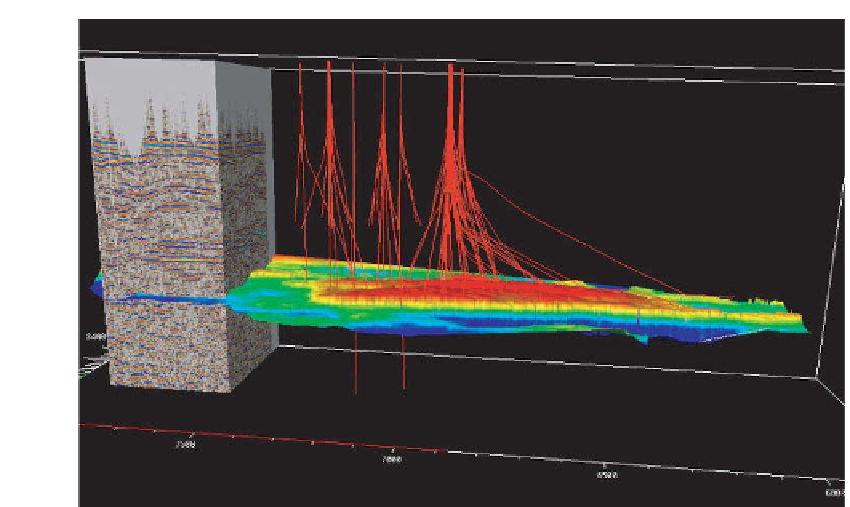Geoscience Reference
In-Depth Information
Fig. 7.3
Combination of data types. In this example, we see seismic data together with the top
reservoir time map and well trajectories.
might be removed above and below a reservoir so as to leave a 3-D body corresponding
to the reservoir alone. A more automated method is sometimes referred to as
voxel
picking.
(A voxel is the 3-D equivalent of a pixel, and is the smallest independent unit
out of which the 3-D volume is constructed, typically corresponding toa4mstime
sample and a 12
5 m horizontal trace grid.) An initial seed point is chosen,
and the software then automatically seeks out all connected voxels with amplitudes
less (or greater) than a given threshold
(fig. 7.4)
. This is most often applied to acoustic
impedance or standard reflectivity volumes, though any seismic attribute that can be
calculated at all points in a 3-D volume could be used. For example, we might choose the
initial point at a high-amplitude value, say 120, and then look for connected points with
amplitudes above a threshold of, say, 100. The software starts by looking at the nearest
neighbours of the initial point in all directions: up, down, and in the four orthogonal
sideways directions. Voxels with amplitude above the threshold are connected into the
body. The process then continues, with nearest neighbours of these new additions being
examined to see if they are above the threshold and combining them into the body if
they are. The process continues until a picked body is created that in all directions
is surrounded by values below the threshold, or which in some directions reaches the
edge of the survey volume. If, for example, a hydrocarbon reservoir is marked by bright
amplitudes, this is a way of automatically determining the connected pay volume. In
practice, trial and error is needed in setting the threshold value. If it is too demanding, the
growth of the picked volume will be quickly arrested; if it is too lax, then the connected
.
5m
×
12
.

